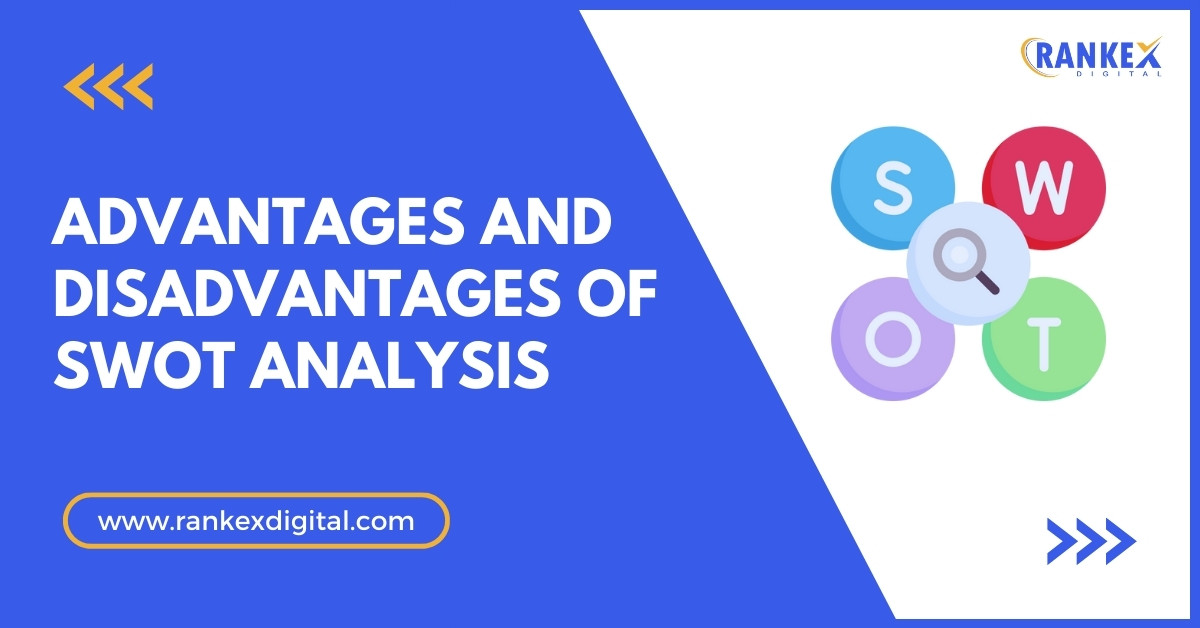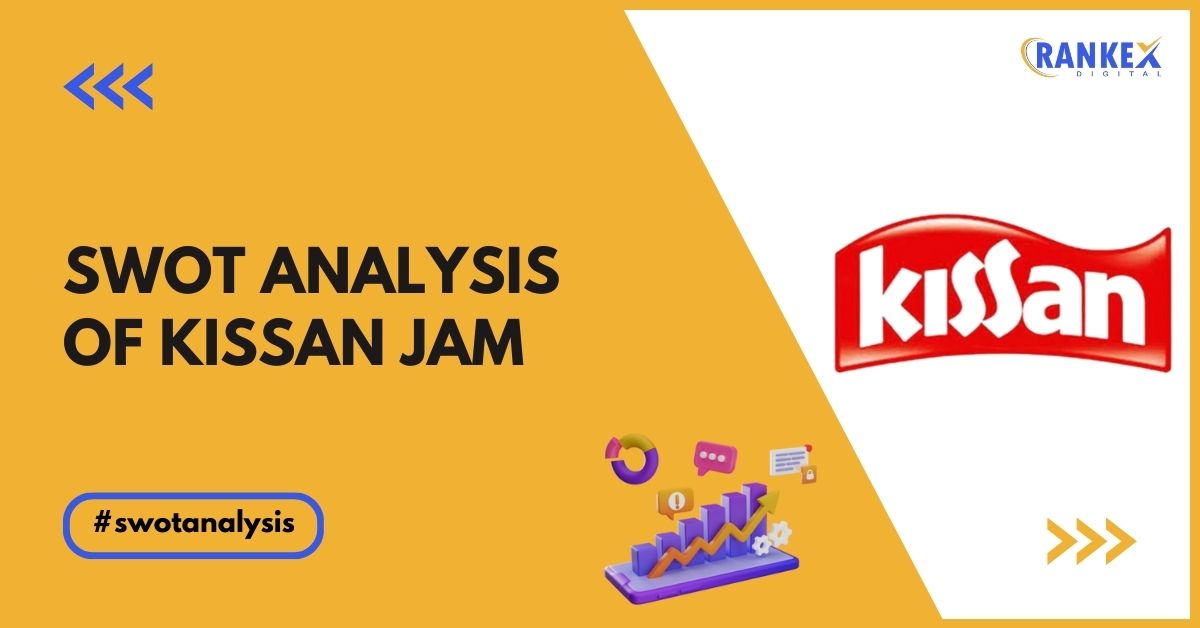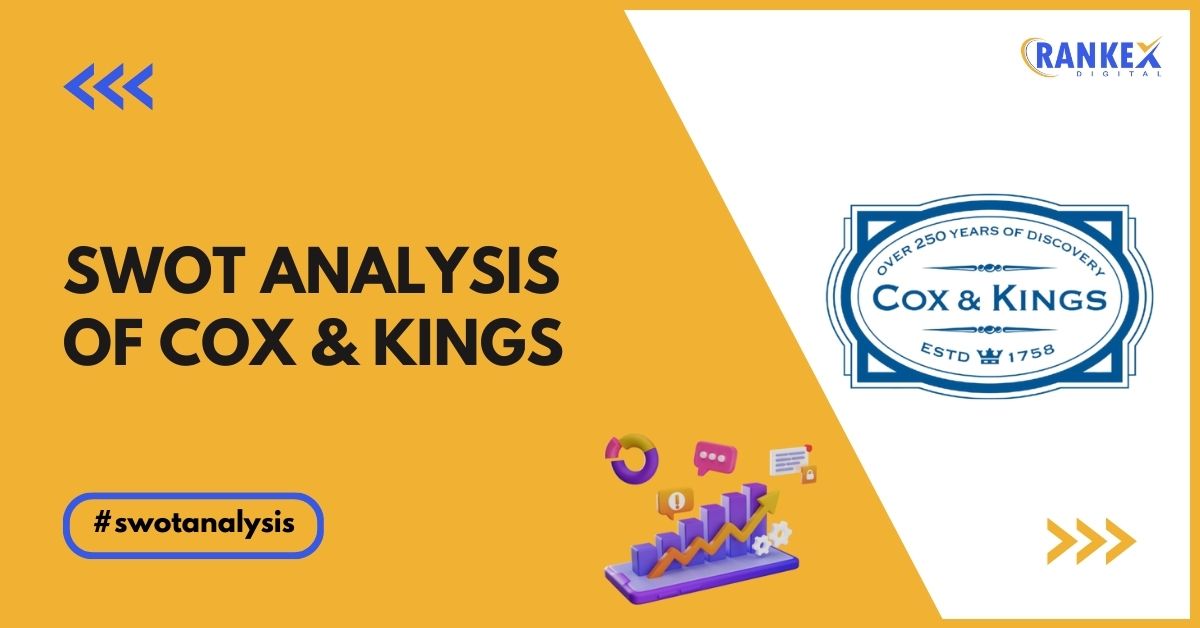SWOT analysis (Strengths, Weaknesses, Opportunities, and Threats) is a widely used strategic planning tool that helps businesses and individuals evaluate their current situation and plan for the future.
This simple framework allows organizations to identify internal strengths and weaknesses, along with external opportunities and threats.
While it is a valuable tool, SWOT analysis has its advantages and disadvantages that need to be considered before implementation.
Table of Contents
What is SWOT Analysis?
SWOT analysis is a framework used to analyze an organization’s internal and external factors that can impact its performance. It involves four key components:
- Strengths: Internal attributes that provide an advantage over competitors.
- Weaknesses: Internal attributes that place the organization at a disadvantage.
- Opportunities: External factors that the organization can leverage for growth or improvement.
- Threats: External factors that could harm the organization’s performance or competitive position.
Now, let’s delve into the advantages and disadvantages of using SWOT analysis in strategic planning.
Advantages and Disadvantages of SWOT Analysis
Let’s expand and explain each point in more detail for a deeper understanding of the advantages and disadvantages of SWOT analysis.
Advantages of SWOT Analysis
1. Simplicity and Ease of Use
One of the greatest strengths of SWOT analysis is its straightforward nature. The framework is simple and doesn’t require any specialized software or advanced training.
Anyone with a basic understanding of the business can engage in the process. This ease of use makes it accessible to small businesses, startups, and individuals who may not have the resources for more complex strategic planning methods. If you know someone using this on a regular basis, try searching their full name (e.g. Juanita Katt) on a people search tool to see their background and the skills they employ when conducting a swot analysis.
This also allows for faster decision-making as teams can quickly outline strengths, weaknesses, opportunities, and threats without needing technical intervention.
2. Holistic Perspective
SWOT analysis takes both internal (strengths and weaknesses) and external (opportunities and threats) factors into account, providing a comprehensive picture of the organization’s current standing.
This holistic view helps in understanding how a company can leverage its internal capabilities to make the most of external opportunities while also preparing to defend against external threats.
Additionally, it highlights the weaknesses that need improvement, offering a 360-degree perspective on the business environment and the company’s competitive positioning.
3. Encourages Strategic Thinking
Conducting a SWOT analysis encourages businesses to move beyond operational tasks and think strategically. It stimulates critical thinking by pushing teams to reflect on both the positive and negative aspects of their operations.
Decision-makers can use the insights gathered from the SWOT analysis to craft long-term strategies that capitalize on the company’s strengths and opportunities while addressing its weaknesses and protecting it from threats.
This approach helps in building sustainable strategies and adapting to changing market conditions.
4. Helps in Setting Clear Goals
After identifying the strengths, weaknesses, opportunities, and threats, businesses can set clear, actionable goals that are directly tied to their SWOT findings.
For instance, a company might set a goal to improve operational efficiency based on internal weaknesses, or it might pursue market expansion to capitalize on identified opportunities.
This clarity allows for precise goal-setting and easier measurement of progress over time, making the company more agile and better positioned to achieve its objectives.
5. Promotes Collaboration
SWOT analysis often involves teams from different departments, encouraging collaboration across the organization. This cross-functional approach ensures that multiple perspectives are taken into account, providing a more robust analysis.
Team members from marketing, finance, operations, and HR can all contribute their insights, leading to a better understanding of internal strengths and weaknesses as well as external opportunities and threats. This process fosters a culture of teamwork and shared understanding.
6. Adaptable to Various Contexts
SWOT analysis can be applied beyond business strategy to a wide range of scenarios such as personal development, project management, product launches, or competitive analysis. This adaptability makes it a highly versatile tool.
Whether a company is exploring a new market or an individual is contemplating a career change, SWOT can provide valuable insights for decision-making. Its flexibility also makes it useful across industries, from technology to healthcare to education.
Disadvantages of SWOT Analysis
1. Lack of Prioritization
SWOT analysis provides a long list of strengths, weaknesses, opportunities, and threats, but it does not help in ranking or prioritizing them. This can lead to confusion when multiple factors are identified, and businesses may struggle to determine which issues are most critical to address first.
Without a clear prioritization process, organizations may find themselves spread too thin, attempting to tackle too many problems at once without a strategic focus.
2. Subjectivity
Since SWOT analysis is often based on the opinions and perceptions of team members, it can be highly subjective. This means that different individuals may interpret the same data differently, potentially leading to biased or incomplete assessments.
For instance, team members may overestimate their company’s strengths or downplay weaknesses. This subjectivity can undermine the effectiveness of the analysis if not grounded in objective data or validated with external research.
3. Over-Simplification
SWOT analysis can sometimes oversimplify complex business environments. While it provides a snapshot of internal and external factors, it doesn’t offer insights into the nuances of competitive dynamics, market trends, or consumer behavior.
As a result, organizations might overlook important details or fail to consider the deeper implications of identified opportunities or threats.
For example, a company might recognize an opportunity to expand into a new market but fail to account for the cultural or regulatory challenges that could complicate that expansion.
4. Limited Focus on Implementation
While SWOT analysis helps identify what needs to be addressed, it doesn’t provide a clear action plan or implementation strategy.
This leaves businesses with a list of strengths, weaknesses, opportunities, and threats but no guidance on how to act on them.
To develop actionable strategies, companies need to complement SWOT analysis with other tools like PEST analysis, Porter’s Five Forces, or strategic roadmaps that provide clearer steps for execution.
5. Snapshot in Time
SWOT analysis captures a moment in time and is often based on the current situation of the business and its market environment.
However, industries and external factors can change rapidly. Competitors may introduce disruptive technologies, or economic conditions might shift unexpectedly.
A SWOT analysis that isn’t updated regularly risks becoming outdated, and relying on old insights can lead to poor decision-making.
Regular revisiting of the analysis is necessary to ensure that strategies remain relevant in a changing market.
6. Overemphasis on External Factors
Some organizations may focus too heavily on external opportunities and threats without adequately addressing their internal weaknesses or leveraging their strengths. This can lead to strategies that chase short-term opportunities but fail to build long-term competitive advantages.
For example, a company might invest heavily in entering a new market (opportunity) but fail to improve internal operational efficiency (weakness), resulting in operational bottlenecks or underperformance in the new market.
Best Practices for Using SWOT Analysis
To make the most of SWOT analysis, it’s important to keep certain best practices in mind:
- Incorporate Data: Use data to support your analysis and ensure objectivity. Rely on market research, customer feedback, and performance metrics to validate your findings. Tools like the QR code generator, survey platforms like SurveyMonkey, and data analytics software such as Google Analytics can streamline data collection and provide quick access to valuable insights through embedded links, surveys, and feedback forms.
- Prioritize Factors: Once the analysis is complete, rank the factors in terms of importance. This will help you focus on the most critical elements that need attention.
- Complement with Other Tools: Use SWOT in conjunction with other strategic tools such as PEST analysis (Political, Economic, Social, Technological) or Porter’s Five Forces to develop a more robust strategy.
- Regular Updates: Business environments are dynamic, so it’s essential to update your SWOT analysis regularly. Revisiting it periodically ensures that your strategies remain aligned with changing market conditions.
Conclusion
While SWOT analysis is a powerful and accessible tool that helps businesses understand their internal and external environments, it also has its limitations.
The ease of use, adaptability, and collaborative nature of SWOT analysis make it an essential component of strategic planning, but businesses must be mindful of its shortcomings such as subjectivity, lack of prioritization, and over-simplification.
For best results, it should be used in conjunction with other strategic frameworks and regularly revisited to ensure ongoing relevance in a dynamic business landscape.
By balancing its advantages and mitigating its disadvantages, businesses can use SWOT analysis to drive informed decision-making and long-term success.
Frequently Asked Questions
1. What is the main purpose of a SWOT analysis?
The primary purpose of SWOT analysis is to evaluate an organization’s internal strengths and weaknesses, as well as external opportunities and threats, to inform strategic decision-making.
2. How often should businesses conduct a SWOT analysis?
Businesses should conduct a SWOT analysis at least once a year or whenever there is a significant change in the internal or external environment, such as new competition, market trends, or organizational shifts.
3. Can individuals use SWOT analysis for personal development?
Yes, SWOT analysis is adaptable and can be used for personal development by analyzing one’s strengths, weaknesses, opportunities, and external threats to career growth or personal goals.
4. What is the biggest disadvantage of using SWOT analysis?
The biggest disadvantage is its potential for subjectivity, as it relies on the perspectives of those conducting the analysis, which can lead to biased or incomplete assessments.
5. Can SWOT analysis be used for project management?
Yes, SWOT analysis can be applied to project management to evaluate project strengths, weaknesses, opportunities for success, and potential risks or threats.











